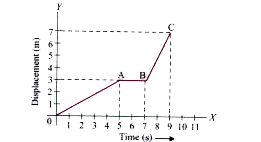Two atomic clocks allowend to run for a average life of an indian (say 70 years) differ by 0.2 s only. Calculate the accuracy of standard atomic clock in measuring a time interval of 1 sec.
The correct Answer is:1 sin 1010 s
Step by step video, text & image solution for Two atomic clocks allowend to run for a average life of an indian (say 70 years) differ by 0.2 s only. Calculate the accuracy of standard atomic clock in measuring a time interval of 1 sec. by Physics experts to help you in doubts & scoring excellent marks in Class 11 exams.
Topper's Solved these Questions
- BOOK - SL ARORACHAPTER - PHYSICAL WORLD AND MEASUREMENTSEXERCISE - Based on Deriving relationship12videos
PHYSICAL WORLD AND MEASUREMENTS
- BOOK - SL ARORACHAPTER - PHYSICAL WORLD AND MEASUREMENTSEXERCISE - Based on Significant15videos
PHYSICAL WORLD AND MEASUREMENTS
- BOOK - SL ARORACHAPTER - PHYSICAL WORLD AND MEASUREMENTSEXERCISE - problem10videos
PHYSICAL WORLD AND MEASUREMENTS
- BOOK - SL ARORACHAPTER - Physical worldEXERCISE - Exercise49videos
Physical world
- BOOK - SL ARORACHAPTER - PROJECTILE MOTIONEXERCISE - Problem For Self Practice50videos
PROJECTILE MOTION
Similar Questions
Two atomic clocks allowed to run for a average life of an indian (say 70 years) differ by 0.2 s only. Calculate the accuracy of standard atomic clock in measuring a time interval of 1 sec.
View SolutionIf two atomic clocks, allowed to run for 60 years differ from eachother by 0.2s only, calculate the accuracy of standerd atomic clock measuring a time interval of 1 sec.
View Solution
Knowledge Check
- Question 1 - Select One
It is claimed that the two cesium clocks, if allowed t run for 100 yr, free from any disturbance, may differ by only about 0.02s. Which of the following is the corret fractional error?
A10−9B10−5C10−13D10−11
Two atomic clocks are allowed to run for 100 years and they differ by 0.1s only. What will be the accuracy of standard atomic clock in measuring 1s?
View SolutionIt is claimed that tow cesium clocks, if allowed to run for 100 years, free from any disturbance, may differ by only about 0.02s. What does this imply for the accuracy of the standerd secium clock in measuring a time interval os 1s ?
View SolutionIf two celsium clocks differ only by 0.02 s in 200 yaers, what is the accuracy of cesium clock in measuring time intervals ?
View SolutionThe velocity of a particle are given by (4t–2) ms–1 along x–axis. Calculate the average acceleration of particle during the time interval from t = 1 to t = 2s.
View SolutionIn the figure, the displacement of a body is shown at different instants of time.
(i) Calculate the velocity of the body as it moves for (a) 0s to 5 s, (b) 5 s to 7 s, and (c) 7 s to 9 s.
(ii) Also, calculate the average velocity during the time interval 7 s to 9 s.
 View Solution
View SolutionThe distance travelled by a body and the time t are related by x=4−3t+2t2m .The average velocity in a time interval of 1 to 4 sec is m/s
View SolutionIn October 1971 an atomic clock was placed on a "Boeing 747" flying at an altitude of 10 km at a velocity of 1000 km/h eastwards. An identical clock, with time-keeping accuracy of 1 ns (1 nanosecond = 10−9) remained on the Earth. The plane was in flight 60 h, after which a comparison was made of the clocks' readings. What was the difference in the readings of the clocks in the plane and on the Earth? What were the contributions of the plane's elevation and its speed of flight?
View Solution

